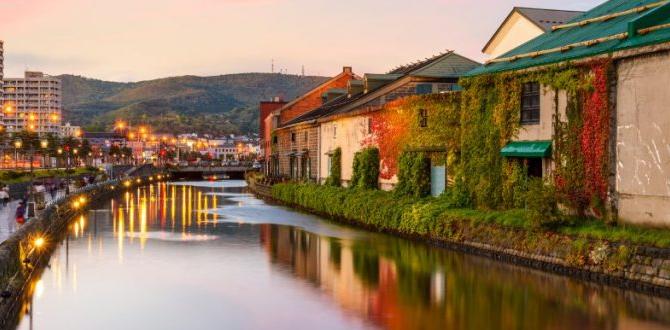Planning your first trip to Agra? This guide provides essential, easy-to-follow tips to make your visit smooth, comfortable, and incredibly memorable. From navigating the iconic Taj Mahal to enjoying delicious local food, get ready for an unforgettable adventure that prioritizes your ease and enjoyment every step of the way.
Welcome, travelers! Agra. The name itself conjures images of timeless romance and architectural marvels. For many, it’s a dream destination, often the first glimpse into India’s rich history and vibrant culture.
But if you’re planning your inaugural visit, a little preparation can go a long way in ensuring your trip is as comfortable and stress-free as possible. We’ve all been there, staring at a blank itinerary, wondering where to even begin. Don’t worry, this guide is designed to demystify your Agra experience, offering practical advice to boost your confidence and excitement.
We’ll cover everything from the best times to visit and getting around, to what to pack and how to savor every moment without feeling overwhelmed. Let’s get you ready for an amazing journey!
Your Essential Agra First-Timers Guide
Agra, a city steeped in Mughal history, is home to three UNESCO World Heritage Sites: the Taj Mahal, Agra Fort, and Fatehpur Sikri. It’s a destination that promises awe-inspiring sights and cultural immersion. As a first-time visitor, you want to ensure your experience is seamless, allowing you to focus on the magic of these iconic landmarks. This guide breaks down the essentials to help you navigate your trip with ease and comfort.
When to Visit Agra: Finding Your Perfect Time
The weather in Agra can significantly impact your experience, so choosing the right time to visit is crucial. Here’s a simple breakdown:
- October to March (Winter): This is generally considered the best time to visit Agra. The weather is pleasant, with daytime temperatures ranging from 15°C to 30°C (59°F to 86°F). The mornings are cool, perfect for exploring the monuments without the intense heat. You can explore comfortably, and the skies are often clear, offering stunning views of the Taj Mahal.
- April to June (Summer): Summers in Agra are extremely hot, with temperatures soaring above 40°C (104°F). It’s generally advisable to avoid visiting Agra during these months if you’re sensitive to heat. If you must travel during this period, ensure you stay hydrated, wear light clothing, and plan your sightseeing for early mornings or late afternoons.
- July to September (Monsoon): The monsoon season brings rain to Agra, which can be a mixed bag. While it offers a welcome respite from the heat and lush greenery, heavy rainfall can disrupt travel plans and outdoor activities. The Taj Mahal, however, can offer a unique, dramatic beauty during a light shower. Be prepared for humidity and pack accordingly.
Getting to Agra: Your Travel Options
Agra is well-connected by major transport networks, making it accessible from various parts of India and the world.
- By Air: Agra has its own airport, Pandit Deen Dayal Upadhyay Airport (AGR), which receives flights from major Indian cities like Delhi and Mumbai. However, flight connectivity can be limited, so many travelers opt for Delhi as their entry point.
From Delhi’s Indira Gandhi International Airport (DEL), you can easily reach Agra.
- By Train: This is often the most popular and comfortable way to reach Agra, especially from Delhi. The Gatimaan Express, India’s fastest train, connects Delhi and Agra Cantt in about 1 hour and 40 minutes, offering a swift and pleasant journey. Several other superfast and express trains also operate between major cities and Agra.
You can check train schedules and book tickets through the official Indian Railways website or reputable travel portals.
- By Road: Agra is connected by a network of national highways. You can hire a taxi or use bus services from Delhi, Jaipur, and other neighboring cities. The Yamuna Expressway from Delhi to Agra is a modern, well-maintained highway that makes road travel comfortable and relatively quick (around 3-4 hours).
Getting Around Agra: Navigating the City
Once you’re in Agra, here are your local transport options:
- Auto-rickshaws and Cycle-rickshaws: These are ubiquitous and convenient for short distances. Always agree on the fare before starting your journey, or insist on using the meter if one is available. Rickshaws are a quintessential Indian experience and a cost-effective way to explore.
- Taxis and Ride-Sharing Apps: Taxis are readily available. Ride-sharing apps like Uber and Ola are also operational in Agra, offering a reliable and convenient way to travel, often with transparent pricing.
- Buses: Local buses are a very affordable option for getting around but can be crowded and may not be the most comfortable for tourists, especially if you’re unfamiliar with the routes.
- E-rickshaws: These are becoming increasingly popular for shorter trips within the city. They are environmentally friendly and quiet.
Must-Visit Attractions in Agra
Agra is synonymous with its magnificent monuments. Here are the absolute must-sees for any first-timer:
- The Taj Mahal: The undisputed icon. It’s advisable to visit early in the morning, ideally at sunrise, to avoid crowds and witness the marble change colors with the light. The serene atmosphere at dawn is magical. Remember to dress respectfully, as it is a tomb.
The Archaeological Survey of India (ASI) maintains the Taj Mahal. You can find official information and ticket booking details on their website, providing accurate and up-to-date information on visiting. Learn more on the ASI website.
- Agra Fort: A magnificent red sandstone fortress that served as the main residence of the Mughal emperors. It’s a sprawling complex of palaces, audience halls, and mosques within its massive walls. It offers a glimpse into the grandeur of the Mughal era and stunning views of the Taj Mahal from certain points.
- Fatehpur Sikri: Located about 40 km from Agra, this ‘ghost city’ was once the capital of the Mughal Empire. It’s a remarkably well-preserved complex of palaces, courtyards, and the iconic Buland Darwaza. It requires at least half a day to explore properly.
- Itmad-ud-Daulah’s Tomb (Baby Taj): Often overlooked, this exquisite tomb is considered a precursor to the Taj Mahal, featuring intricate marble inlay work and a beautiful garden setting.
- Mehtab Bagh: Located across the Yamuna River from the Taj Mahal, this Mughal garden offers a spectacular vantage point for sunset views of the Taj. It’s a more tranquil spot for enjoying the monument.
Planning Your Taj Mahal Visit: Key Tips
The Taj Mahal is the star attraction, and a little planning makes the visit so much better. Here are some tips:
- Timing is Everything: As mentioned, sunrise is magical. Sunset is also beautiful, though generally more crowded. Moonlight viewings are available on full moon nights (and the two nights before/after), offering a unique ethereal experience.
- Tickets: Purchase your tickets online in advance from the official ASI website or the Uttar Pradesh tourism website. This saves considerable time waiting in queues.
- Entry Gates: There are three entry gates: the East, West, and South gates. The East and West gates are most commonly used for day visitors. The East gate often opens earlier and sees fewer crowds at opening time.
- Security and Restrictions: Strict security checks are in place. Large bags, food items, tripods, drones, and electronic smoking devices are prohibited. Essential items are allowed, and there are cloakrooms available outside the complex for larger items.
- Dress Code: While not strictly enforced for the grounds, it’s a mausoleum. Modest attire (shoulders and knees covered) is recommended out of respect.
- Guides: Consider hiring an official government-approved guide at the ticket counter or information center. A good guide can enrich your experience by sharing historical details and stories.
Comfort and Preparedness: What to Pack and Bring
Traveling comfortably is key to enjoying your adventure. Here’s a checklist for your Agra trip:
- Lightweight, breathable clothing: Cotton or linen is ideal, especially for warmer months.
- Comfortable walking shoes: You’ll be doing a lot of walking!
- Sun protection: Sunscreen, a hat, and sunglasses are essential.
- Reusable water bottle: Staying hydrated is vital.
- Hand sanitizer: Always handy when on the go.
- A small backpack or day bag: To carry essentials.
- Power bank: To keep your devices charged for photos and navigation.
- Insect repellent: Especially useful for evenings or if you plan to visit gardens.
- For parents: If you’re traveling with infants or toddlers, remember essentials like diapers, wipes, portable changing mats, and perhaps a lightweight stroller or baby carrier. Comfortable adult or child diapers can also be a lifesaver for long journeys, flights, or extended sightseeing days, ensuring peace of mind and freedom to explore without worry.
Food and Drink: Savoring Agra’s Flavors
Agra offers a delightful culinary journey. Don’t miss out on these local specialties:
- Petha: Agra’s most famous sweet, a translucent soft candy made from ash gourd. Available in many flavors, it’s a perfect souvenir.
- Mughlai Cuisine: Indulge in rich gravies, kebabs, and biryanis. Local restaurants offer authentic and delicious Mughlai dishes.
- Street Food: For the adventurous, try local chaats, samosas, and jalebis from reputable vendors. Ensure the food is cooked fresh and hygienic.
- Hydration: Stick to bottled water or treated water. Avoid tap water.
Practical Tips for First-Timers
Here are some general, actionable tips to make your Agra visit hassle-free:
- Book Accommodation in Advance: Especially during peak season, book your hotel or guesthouse beforehand.
- Bargain Respectfully: For auto-rickshaws and in local markets, bargaining is common. Do it with a smile and a sense of fairness.
- Stay Hydrated: Carry a water bottle and refill it frequently.
- Be Aware of Scams: Like any tourist destination, be wary of overly pushy touts or unsolicited “guides.”
- Learn a Few Hindi Phrases: Simple greetings like “Namaste” (Hello) and “Dhanyawad” (Thank you) go a long way.
- Patience is a Virtue: Embrace the pace of Indian life. Things might not always run exactly on schedule, and that’s part of the experience.
- Dress Modestly: While Agra is a tourist city, it’s still part of India. Dressing respectfully, especially when visiting religious sites, is appreciated.
Sample Itinerary: A 2-Day Agra Exploration
For a first-timer, a 2-day itinerary offers a good balance of seeing the main sights without rushing.
| Day | Morning | Afternoon | Evening |
|---|---|---|---|
| Day 1 | Arrive in Agra. Check into your hotel. Visit Agra Fort. | Lunch. Explore the local markets for souvenirs. | Visit Mehtab Bagh for sunset views of the Taj Mahal. Dinner. |
| Day 2 | Sunrise visit to the Taj Mahal. | Breakfast. Visit Itmad-ud-Daulah’s Tomb (Baby Taj). Lunch. | Optional: Visit Fatehpur Sikri (requires more time, possibly extending Day 2 or adding Day 3). Depart from Agra. |
Note: If you plan to visit Fatehpur Sikri, it is best to dedicate at least half a day to it. This might require an extra day, or you could choose to do it on the morning of your departure if your travel schedule allows.
Making Travel Comfortable for Everyone
As Michael C. Herrera of Journey Essentials, I always emphasize that travel should be about exploration and enjoyment, not discomfort. For families, especially those traveling with young children, and for adults who may need extra support, considering comfort solutions is paramount.
For parents, managing diaper needs on the go can be a significant logistical challenge. Having easy-to-access, reliable products is key. Pack plenty of diapers, wipes, and a portable changing mat. These items are essential for hygienic and fuss-free stops during sightseeing or long journeys.
For extended travel days, long flights, or even just a full day of exploring historic sites, having discretion and ease of use with adult or child diapers can dramatically reduce stress. These products are designed for maximum absorbency and discreet comfort, allowing you to focus on the experience rather than potential worries. It’s about enabling everyone to travel with dignity and freedom.
Remember, preparedness is the bedrock of stress-free travel. Whether it’s ensuring you have the right adapters for your electronics or packing comfort items, a little foresight makes a world of difference.
Conclusion
Agra is a city that captivates the soul with its legendary beauty and historical significance. By following these essential tips for first-timers, you’re well on your way to planning a trip that is not only efficient but also incredibly comfortable and enjoyable.
From selecting the best time to visit and navigating the city like a pro, to savoring its unique flavors and ensuring your personal comfort throughout the journey, this guide equips you with the knowledge to make your Agra adventure truly unforgettable.
Frequently Asked Questions
1. Is Agra safe for solo travelers?
Yes, Agra is generally safe for solo travelers, especially during daylight hours and in tourist areas. However, like any city, it’s wise to be aware of your surroundings, avoid walking in poorly lit or deserted areas at night, and be cautious of touts. Staying in reputable accommodations and using trusted transport options further enhances safety.
2. How much time should I allocate for the Taj Mahal?
To truly soak in the experience, including travel time to the site, security checks, exploring the grounds, and appreciating the architecture, allow at least 3-4 hours for the Taj Mahal itself. Visiting during sunrise or sunset will naturally extend this time due to the atmosphere.
3. Is it worth visiting Fatehpur Sikri?
Absolutely! Fatehpur Sikri is a historical gem and a UNESCO World Heritage Site. It offers a unique perspective on Mughal urban planning and architecture. While it requires a day trip or a significant part of a day from Agra, it is highly recommended for history buffs and anyone interested in India’s rich past.
4. What currency should I use in Agra?
The currency in India is the Indian Rupee (INR). While credit cards are accepted in larger hotels, restaurants, and shops, it’s essential to carry cash for smaller purchases, auto-rickshaws, and street food. ATMs are widely available.
5. How can I avoid getting ripped off by guides or drivers?
Always hire official guides from the ticket counters or tourist information centers. For taxis and auto-rickshaws, agree on the fare beforehand or ensure they use the meter. Using ride-sharing apps like Uber or Ola can provide transparent pricing. Be polite but firm when negotiating or declining services you don’t want.
6. What are the essential items to carry for a day trip exploring sites?
For a day of sightseeing, essential items include: plenty of water, sunscreen, a hat, comfortable walking shoes, hand sanitizer, a portable power bank for your phone, and a small backpack. If you have specific medical needs, ensure you have any necessary personal care items like adult or child diapers for comfort and discretion.
7. Is photography allowed at the Taj Mahal?
Photography is allowed within the Taj Mahal complex, but not inside the main mausoleum itself. Tripods are also prohibited.



